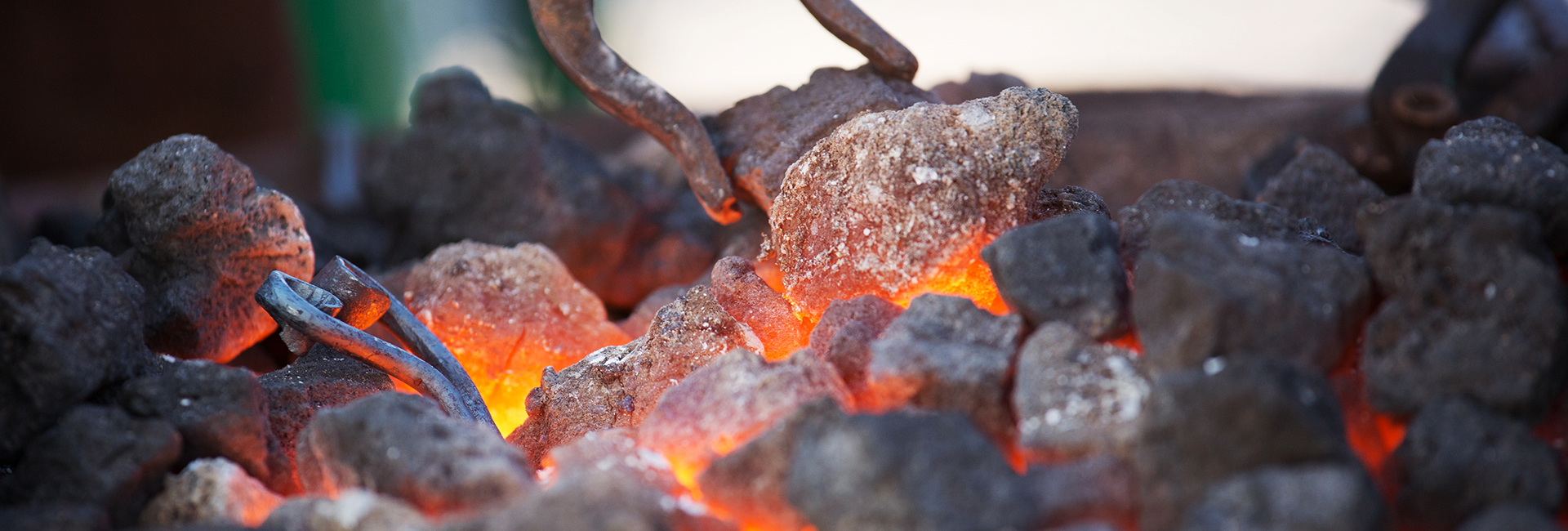Do you belong to the manufacturing sector, always looking for the appropriate raw material to create high-quality steel? Torn between the use of sponge iron or pig iron? You’re in good company.
|
Table of Content
|
Let’s put you on stage: you’re in charge of steel manufacturing. The raw material choice is yours, to use sponge iron or pig iron. Both have their advantages, but your choice would depend on your priorities, cost, efficiency, environmental concern, or quality. It’s not always a simple black-and-white decision.
That’s precisely why we’ve designed this detailed guide. In this post, we dissect the dissimilarities between Pig Iron vs. Sponge Iron on the basis of various factors such as composition, production processes, properties, and uses. Whether you’re an experienced metallurgist or just a novice, this article is for you.
Get a cup of coffee and join us to learn about which iron propels more efficient steel manufacturing.
An Overview of Sponge Iron vs Pig Iron
Both Sponge Iron and Pig Iron are critical to steel-making, but they cannot be used as alternatives. They differ in the way they are manufactured and behave when used in different industrial processes.
- Sponge Iron, or Direct Reduced Iron (DRI), is made by reducing iron ore in the presence of non-coking coal or natural gas without melting the ore.
- Pig Iron is produced by smelting iron ore in a blast furnace with coke and limestone and casting it into molds.
Each has advantages and disadvantages. Let’s discuss them further.
What is Pig Iron?
Pig Iron is a raw iron product with high carbon content, generally made by smelting iron ore in a blast furnace. It’s named “pig iron” because its molds were shaped like piglets nursing from a sow.
This form of iron has 3.5% to 4.5% carbon content, along with small amounts of silicon, manganese, phosphorus, and sulfur. Though not directly usable in most applications, pig iron is a basic intermediate material for steel and cast iron production.
Pig Iron Uses
Pig Iron has been a raw material of choice for centuries. Some of its most widespread applications are:
- Steel Production: One of the major feedstocks in steel mills.
- Cast Iron Manufacture: Used in the production of cast iron pipes, cookware, engine blocks, etc.
- Wrought Iron: Pig iron is further purified to produce wrought iron for ornamental fences, gates, and railings.
- Pipes and Fittings: Its casting property makes it suitable for intricate shapes.
These diverse applications of pig iron showcase how this material remains the backbone of heavy industries.
Pig Iron Properties
Pig Iron is an alloy of iron, carbon, and other elements that are produced by smelting iron ore in a blast furnace. The Pig Iron properties can vary depending on the specific composition and manufacturing process used. Here are some physical and chemical Pig Iron properties:
It is very important to know the physical and chemical properties of pig iron to decide the appropriate raw material in steel production.
Physical Properties
- Density: 6.9–7.8 g/cm³
- Melting Point: 1150–1250°C
- Boiling Point: Approximately 2927°C
- Color: Dark gray to black
Chemical Properties
- Carbon: 3.5–4.5%
- Silicon: 0.5–3.5%
- Manganese: 0.1–2.5%
- Sulfur: 0.05–0.15%
- Phosphorus: 0.1–2.0%
Pig Iron Composition
The pig iron composition depends directly on raw materials and conditions in the furnace. Generally:
- Carbon provides strength but also brittleness.
- Silicon and manganese are beneficial to fluidity when casting.
- Phosphorus and sulfur are impurities and have an impact on toughness and ductility.
All these elements need to be minimized in further processing in order to produce pig iron acceptable for steelmaking.
Pig Iron Manufacturing Process
Pig iron production consists of a few major stages:
- Raw Material Preparation: Coke, limestone, and iron ore are gathered and prepared for the blast furnace.
- Charging the Furnace: They are charged into the blast furnace in layers.
- Reduction: Coke is heated at high temperatures and burns to form carbon monoxide, which reduces the iron ore to molten iron.
- Casting: The molten pig iron is let out and cast into molds, where the term “pig” iron comes from.
This energy-sipping process necessitates fuel and flux, adding to greater emissions and expense.
Also Read: Understanding Cast Iron vs. Pig Iron: Differences, Prices and Properties
What is Sponge Iron?
So, what is sponge iron? It is a highly pure grade of iron referred to as Direct Reduced Iron (DRI). Pig iron is not made in the same manner, as sponge iron is made without being melted. Instead, iron ore is reduced by gases such as hydrogen or carbon monoxide at lower than the melting point.
The name is derived from its sponge-like shape due to porosity formed in oxygen removal. It is low in carbon and impurities and is suitable for electric arc furnaces and high-quality steel making.
Sponge Iron Uses
Sponge iron uses range from diversified applications due to its clean, controlled structure. A few of the most significant uses of sponge iron include:
- Steel Production: As an alternative to scrap in electric arc furnaces.
- Foundries: Utilized for making ductile and grey iron castings.
- Chemical Industry: Serves as a catalyst for chemical reactions for ammonia and hydrogen production.
- Energy-Efficient Applications: Its clean burning makes it attractive for green manufacturing.
As these varied sponge iron applications show, it increasingly serves as a key component of contemporary steelmaking processes.
Sponge Iron Composition

The sponge iron composition makes it one of the purest forms of iron produced. It usually consists of:
- Iron (Fe): 88–94%
- Carbon: 0.5–2.5%
- Silicon: Up to 2%
- Manganese: Trace to 2%
- Phosphorus & Sulfur: Usually less than 0.05%
Due to its controlled production process, sponge iron composition is uniform and appropriate for high-grade usage.
Types of Sponge Iron
Sponge Iron may be manufactured in a variety of forms depending on application and processing conditions:
- DRI (Direct Reduced Iron): Processed in lump or pellet form; predominantly utilized in electric arc furnaces.
- HBI (Hot Briquetted Iron): Densified form of DRI for improved storage and handling.
- HDRI (Hot Direct Reduced Iron): Utilized directly after reduction, carrying heat as an energy-efficient method.
The above forms provide scope to transport, store, and utilize sponge iron in flexible ways.
Process of Sponge Iron Manufacturing
The process of manufacturing sponge iron relies on the principle of direct reduction:
- Raw Material Selection: Lump or pellet iron ore of high grade is chosen.
- Reduction Process: The ore is heated in a shaft furnace or rotary kiln in the presence of a reducing gas (carbon monoxide or hydrogen).
- Separation & Cooling: The iron that is reduced is cooled and separated from the waste materials.
- Final Product Handling: The sponge iron is warehoused and shipped for application in steel plants or foundries.
This process is less energy-intensive than pig iron production and has less emissions, thus more environmentally friendly.
Sponge Iron vs Pig Iron: Detailed Comparison

Let’s now summarize the difference between Sponge Iron vs Pig Iron in a transparent and organized manner:
|
Feature |
Sponge Iron |
Pig Iron |
|
Method of Production |
Direct reduction of iron ore without melting |
Smelting within a blast furnace using coke and limestone |
|
Carbon Content |
0.5% to 2.5% |
3.5% to 4.5% |
|
Impurities |
Low |
High (sulfur, phosphorus) |
|
Melting Point |
Higher |
Lower |
|
Malleability |
High |
Low (brittle) |
|
Environmental Impact |
More environmentally friendly, lower emissions |
High emission, coke uses |
|
Uses |
Steelmaking, electric arc furnaces, foundries |
Cast iron, steel mills, wrought iron |
|
Cost |
Typically lower owing to coke-free process |
Higher due to coke use |
|
Storage and Transport |
Can be in lump, pellet, HBI form – easier to transport |
Brittle, bulkier – more difficult to transport |
This comparison emphasizes the chief technical and practical distinctions that industries need to take into account while selecting between the two.
|
|
|
|
|
|
|
|
|
|
|
|
|
|
|
|
|
|
|
|
|
|
|
|
Read more: The working of the iron ore market
Wrapping It Up
When it comes to Pig Iron vs. Sponge Iron, there is no one-size-fits-all answer. Both materials have unique strengths:
- Sponge Iron offers high purity, consistent quality, and lower environmental impact, perfect for modern, sustainable steelmaking.
- Pig Iron, while more carbon-heavy, remains vital in applications requiring casting and high strength.
The right choice depends on your application, budget, and sustainability goals.
Need high-quality Sponge Iron? Sree Metaliks Limited is the place to go. Our sophisticated processes and stringent quality inspections guarantee our sponge iron matches the best in industry standards. Need it for steel manufacturing or special casting requirements? We have you covered.
Contact us at Sales@sreemetaliks.com to get in touch with us and get more information on our products or to request a customized quote.
For more information, please reach out to us at: Sales@sreemetaliks.com

